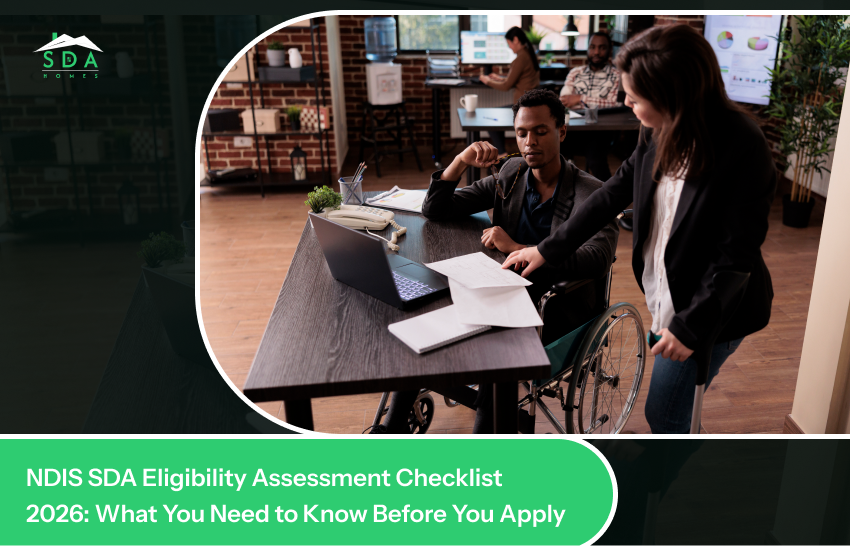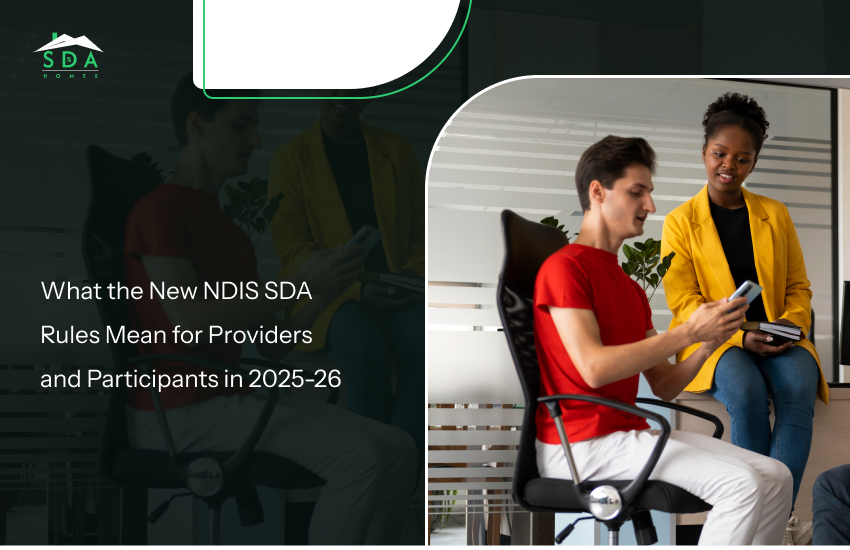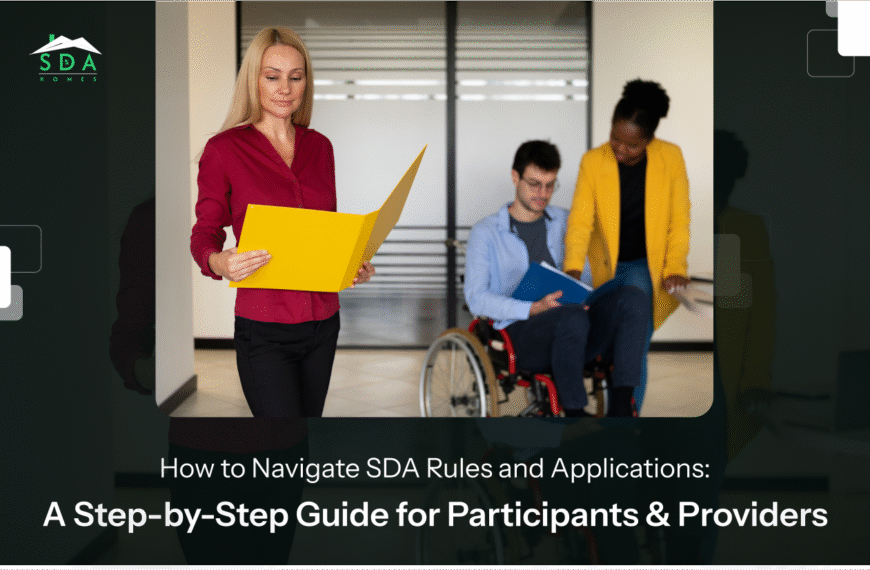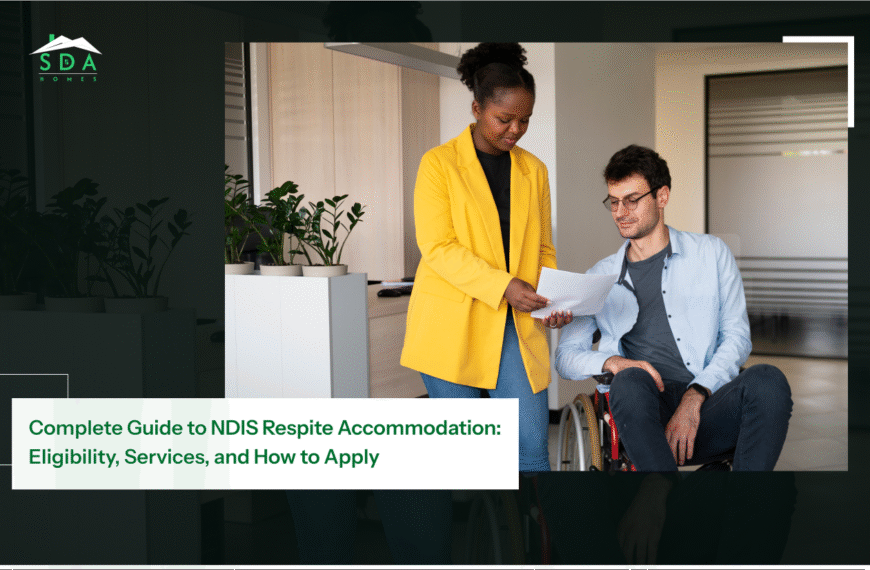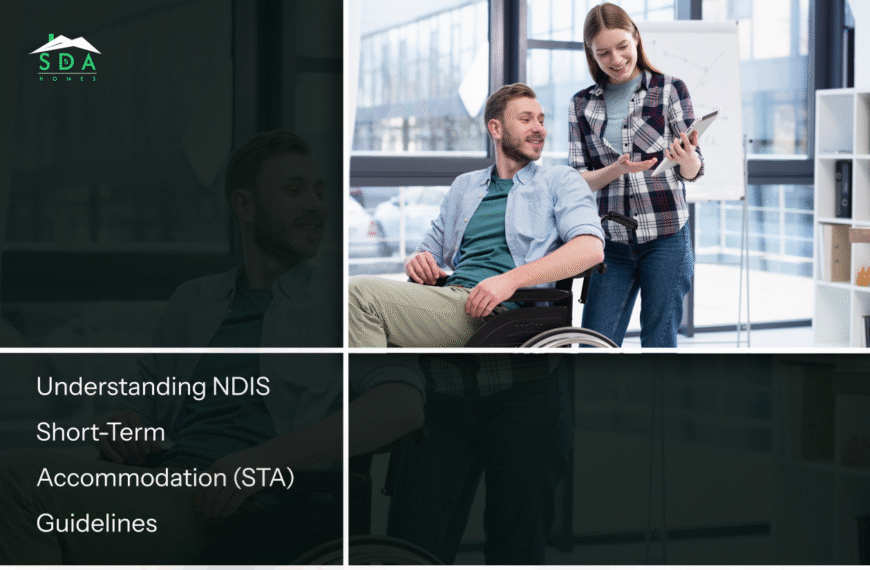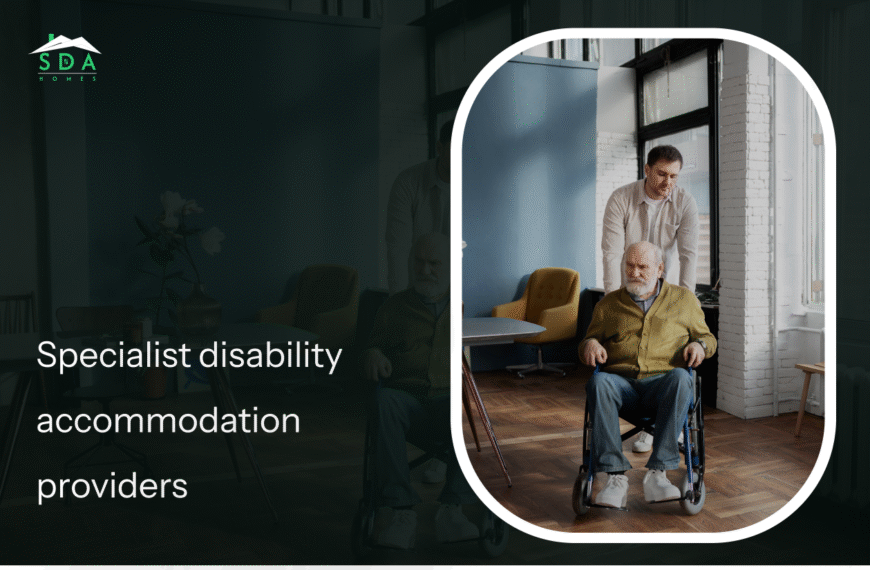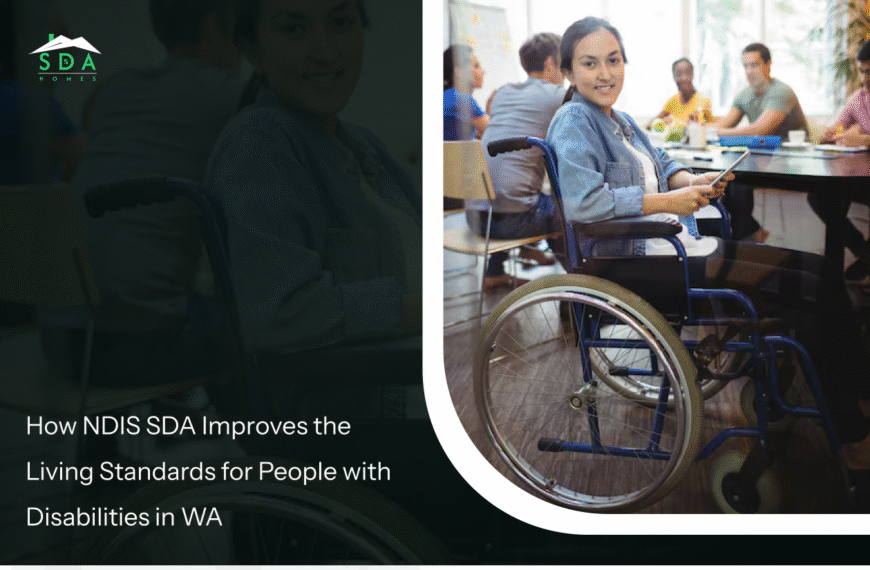Have you ever felt lost trying to understand the rules for NDIS funding? You’re not alone. The new 2025 (Specialist Disability Accommodation) SDA rules for Funding are all about making sure people who truly need specialized homes get the right support. These changes bring clearer eligibility, more transparent funding, and updated standards.
SDA funding is designed to cover the cost of a specialized home itself, not your daily care. So, to make the most of your NDIS plan, it’s a good idea to stay on top of the latest guidance for applications and providers.
By choosing the right SDA provider and staying informed about rule changes, you can make the whole journey much smoother for you and your family. That’s why, in this post, we’ll break down the 2025 SDA rules into a simple, easy-to-follow guide, so you can take your next step with confidence.
What is Specialist Disability Accommodation (SDA)?
Specialist Disability Accommodation or SDA means homes designed for people with significant functional impairment or very high care needs. It’s not just any accessible home, but properties designed with advanced features and Assistive Technologies (AT) for those who need something more than the “average” accessible house.
Specialist accommodations provide independence without sacrificing safety or support. It is different from supported independent living (SIL) or other in-home help; it’s all about the building itself.
Quick glance: SDA vs. Other Support Types
| Features | SDA | Supported Independent Living (SIL) | Home Modifications |
| Focus | Specialist housing | Daily living & personal support | Adjustments to the existing home |
| Founded by NDIS | Yes | Yes | Yes |
| Covers personal support? | No | Yes | No |
SDA Funding Explained: What Does It Cover?
SDA funding is specifically meant for the building of structures (and some additional items):
- Building or upgrading a property to meet specialist needs.
- Rental subsidies for eligible housing.
- Advanced accessibility features (like automated doors or wheelchair access).
- Built-in assistive technology infrastructure.
- Extra security features for peace of mind.
What doesn’t it include?
- Your daily care (help with cooking, cleaning, or personal hygiene).
- Every day living costs, like utilities or groceries.
This clear gap ensures that your housing and personal support are funded independently, giving you more choice and control over your services.
Who is Eligible for SDA Funding in 2025?
The 2025 rules are designed to prioritize those with the highest needs. To be eligible, you’ll need:
- Extreme functional impairment means you experience major difficulties with everyday tasks, even with the support aids currently in place.
- Very high support needs: You must go for ongoing oversight or intensive help.
- Specialist assessment: You’ll need reports from medical professionals, like an occupational therapist (OT), to support your application.
- The right fit: You must show that a specialized home will significantly improve your quality of life in a way a standard home cannot.
Tip: Eligibility isn’t once-and-done. If your needs change, update your application or plan.
How to Apply: The SDA Funding Journey Under NDIS
Step 1: Self-Assessment: Take some time to write down the daily struggles you face, even with your current support.
Step 2: Get Professional Input: Work with your support coordinator, GP, or therapists to get the medical and occupational therapy reports you’ll need.
Step 3: Gather Documentation: Keep all your reports, support plans, and assessments in one place.
Step 4: Apply via your NDIS planning meeting: Bring all your evidence to your NDIS planning meeting. Be clear and specific about how a specialized home will help you achieve your goals.
Step 5: Stay Involved: Once approved, you get to work with your support team to find the perfect SDA housing and provider for you.
Pro tip: Make your application personal, lived experience counts, and share your story.
Key SDA Rules & Design Standards for 2025
The SDA funding rules for 2025 have a few big highlights:
- Eligibility is Targeted: Funding is reserved for those with extreme impairment or very high needs, supported by professional advice.
- You Have the Power of Choice: You can choose your own provider, the type of property, and who you live with.
- Compliance is a Must: Providers need to follow strict design standards and be registered with the NDIS Commission.
- Clear Rent Rules: There’s a cap on how much you contribute from your income, and it’s updated annually.
SDA design categories:
- Better liveliness: For people with sensory, intellectual, or cognitive needs.
- Completely accessible: For those who need full wheelchair access.
- Strong: For those participants who require high levels of physical safety.
- High Physical Support: For those who need complex equipment or assistance.
Every SDA housing project must stick to strict safety, design, and location standards.
What’s New in 2025: Funding Updates, Rent, and the SDA Market
These changes are great news for NDIS participants, as they open up more options and improve the quality of housing available.
- New Funding and Rental Caps: Clearer rules on rent and maximum funding amounts are set and reviewed every year.
- Growth in the Market: We’re seeing more SDA homes being built, particularly apartments in major cities.
- Provider Accountability: The NDIS is implementing stricter checks to ensure providers offer high-quality housing and prioritize participant choice.
These changes are excellent news for the NDIS housing regulations in Australia, particularly due to the increase in institutional investors and more rigorous compliance checks for SDA providers.
Typical Mistakes & Valuable Tips for Dealing with SDA Regulations
The current SDA financing rules can be complicated, even for experienced support coordinators, who sometimes may be unsure of the best steps to take. To help you avoid common mistakes, here are some important points to keep in mind:
- Conscious evidence: Applications with unclear or general reports will not continue and will be rejected. Always provide specific examples that clearly show the participant’s needs.
- Missing professional assessments: Make sure you include an updated medical or occupational therapy (OT) report. Older or non-assessment may delay or block approval.
- Choosing the wrong provider: Not all SDA homes or suppliers meet the requirements of any participant. Take time for research and find the right struggle.
- Ignoring rule changes: SDA rules are updated regularly, often annually. It is important to inform about these changes to avoid surprise or match problems.
Pro tip: Stay in touch with a trusted provider or advocacy group. They often have inside tips for navigating the system.
Final Takeaway
It can be very tricky to understand the SDA funding regulations in 2025. However, if you simplify your approach, collect proper evidence, and collaborate with a good team, you will be in a better position than others. Make sure you regularly update your records by looking for the most recent SDA standards and design guidance.
If you’re seeking personalized advice, SDA plan reviews, or provider recommendations, please reach out to a registered provider, such as SDA Homes, for an end-to-end advocacy service.
Feel free to raise any queries; there is always someone to help you!
SDA Rules for Funding FAQs
Q1: Can I apply for SDA if I’m already in a group home?
A: Yes, many people do, but you still need to provide strong evidence of your need.
Q2: Where can I find SDA-accredited providers?
A: The best place to start is the NDIS Commission’s website. Your planner or support coordinator can also give you some great recommendations.
Q3: What if my needs change?
A: You can apply for a review and update your NDIS plan with new evidence to reflect your changing needs.
Q4: Are there any limits on where I can live?
A: Some rules around postcodes and property types apply, but with new developments happening all the time, you have more choices every year.


